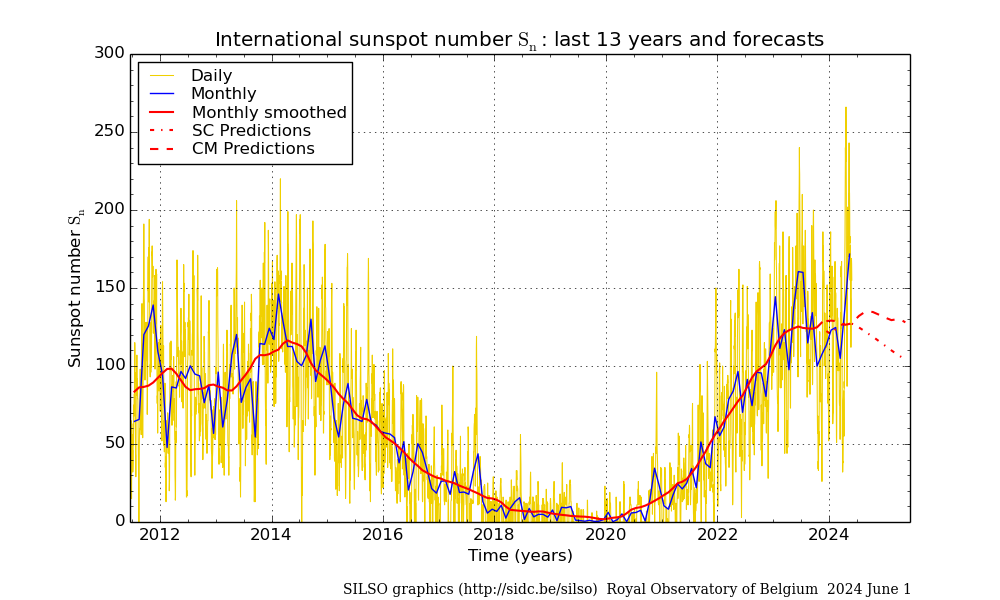The STCE's SC25 Tracking page has been updated to reflect the latest evolution of some critical space weather parameters for the ongoing solar cycle 25 (SC25). It covers various aspects of space weather, from sunspot numbers over geomagnetic indices all the way to cosmic rays. The multiple graphs allow for a comparison with previous solar cycles at similar stages in their evolution.
Active region NOAA 13664 gave a face to the ongoing SC25. It was the largest sunspot group in more than a decade, produced the strongest solar flare so far this solar cycle, was the most flare productive region in more than 3 decades, and the source of the coronal mass ejection that eventually would lead to the strongest geomagnetic storm in two decades. The clip below shows two days of flaring activity on the Sun, the extreme ultraviolet images were made by GOES/SUVI 094. On 8 and 9 May, the Sun produced no less than 28 M- and X-class flares, 20 of them courtesy of his majesty NOAA 13664.

The rise of solar activity over the last 2 months may indicate that SC25 is moving to its second maximum, the first one having already occurred in June 2023. Typical solar activity parameters such as the smoothed sunspot number, the solar radio flux and the number of CMEs show a gradual rise again. This second maximum is still thought to occur later this year, with the SILSO predictions for SC25 maximum (12-month window) gradually converging to a maximum between 130 and 140 in the second half of 2024, thus remaining well above the initial prediction by the SC25 Panel (115).






